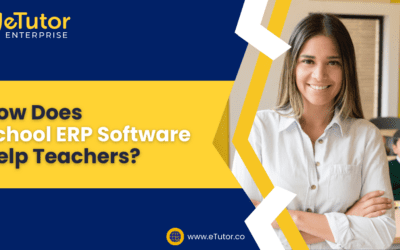OMR Integration with Online Assessment Software

Introduction
The fusion of Optical Mark Recognition (OMR) technology with online assessment software is set to redefine how you approach exams. Imagine a seamless, hassle-free examination experience that not only maximizes efficiency but also elevates accuracy and scalability to new heights. This guide aims to provide a comprehensive overview of the process, benefits, and considerations involved in integrating OMR with online assessment platforms.
What is OMR?
Optical Mark Recognition (OMR) is a technology that enables the automatic recognition of marked data on a predefined document, usually in the form of checkboxes or filled-in bubbles. OMR technology is widely used in various fields, including education, surveys, and data collection, to efficiently process large amounts of information.
Traditional vs. Online OMR:
● Traditional OMR: In traditional OMR, physical sheets are printed with pre-defined bubbles or checkboxes, and individuals use pencils or pens to mark their responses. These sheets are then scanned using OMR scanners for data processing.
● Online OMR Integration: With the integration of OMR into online assessment software, the need for physical sheets is eliminated. Participants can mark their responses digitally, and the software processes the marked data electronically.
How OMR Integration Works?
Here is the simple workflow of OMR integration software.
1.Scanning and Imaging:
● Traditional OMR: Physical OMR sheets are scanned using specialized OMR scanners. These scanners use optical sensors to detect marked areas on the sheet, converting the information into digital images.
● Online OMR: Digital OMR sheets are scanned using our software within the online assessment platform. Participants’ marked responses are captured through the digital interface.
2. Data Capture and Processing:
● Traditional OMR: After scanning, the digital images of the sheets undergo data capture, where the marked areas are identified and converted into binary data (marked or unmarked). This data is then processed for analysis.
● Online OMR: The digital responses captured during the online assessment are processed in real-time by the assessment software. The software interprets the marked data and performs instant analysis, providing quick and accurate results.
Benefits of OMR Integration Software
The benefits of OMR integration software includes:
● Enhanced Efficiency: OMR integration significantly accelerates the grading process by automating the identification and evaluation of marked responses. This eliminates the need for manual checking, reducing the time and effort required for grading.
● Automated Data Entry: OMR technology automates the data entry process by swiftly capturing and converting marked data into digital format. This not only saves time but also minimizes the risk of data entry errors associated with manual input.
● Improved Accuracy: OMR systems excel in minimizing human errors associated with manual grading. The automated nature of OMR ensures consistent and accurate interpretation of marked responses, eliminating subjective judgment and potential grading discrepancies.
Consistent and Reliable Results:
● Rapid Assessment Turnaround:
The automation of grading processes in OMR allows for a rapid turnaround in assessment results. Educational institutions can quickly provide feedback to students, facilitating a timely and efficient learning process.
Real-time Feedback:
● User-Friendly Experience
OMR technology, especially in online assessments, simplifies the test-taking experience for participants. Digital interfaces provide user-friendly platforms for marking responses, making the assessment process more accessible and intuitive.
Accessibility for All Users:
OMR integration enhances accessibility by accommodating various learning styles and physical abilities. Participants can engage with assessments in a digital format, providing a more inclusive experience for diverse user groups.
The integration of OMR with online assessment software offers a range of benefits, from efficiency gains and improved accuracy to faster grading processes and a more user-friendly experience. These advantages collectively contribute to an enhanced and streamlined educational assessment environment.
Benefits of OMR Integration Software
Integrating eTutor Digital OMR with an Online Assessment Software involves a systematic approach to ensure a seamless and efficient process.
Below are the steps to guide you through the integration:
1. Assess Compatibility:
Confirm that the chosen Online Assessment Software is compatible with eTutor Digital OMR. Check for compatibility requirements, API documentation, and any specific integration guidelines provided by both systems.
2. Obtain Necessary Software and Licenses:
Ensure that you have the required licenses and versions of both eTutor Digital OMR and the Online Assessment Software. Verify that your licenses cover the integration features you plan to utilize.
3. Understand API Integration:
Determine if eTutor Digital OMR and the Online Assessment Software provide Application Programming Interfaces (APIs) for integration. Familiarize yourself with the API documentation to understand the available endpoints, authentication methods, and data exchange protocols.
4. Configure eTutor Digital OMR:
Set up eTutor Digital OMR according to the requirements of your assessment. This includes defining the question formats, answer layouts, and any specific configurations needed for seamless integration.
5. Design OMR Sheets:
Create OMR sheets that align with the requirements of the Online Assessment Software. Ensure that the OMR sheets are designed to capture responses accurately, and they follow any specific guidelines provided by both systems.
6. Establish Data Mapping:
Define how the data from eTutor Digital OMR will be mapped to the Online Assessment Software. Establish a clear mapping strategy for variables such as participant information, question responses, and grading criteria.
7. Set Up Authentication:
Implement authentication protocols to secure the integration. Use secure methods such as API keys, tokens, or OAuth to ensure that only authorized users and systems can access and exchange data.
8. Develop Integration Code:
Write the integration code or scripts based on the chosen programming language and the API documentation. This code should facilitate the communication between eTutor Digital OMR and the Online Assessment Software, ensuring smooth data transfer.
9. Test the Integration:
Conduct comprehensive testing to ensure the integration functions correctly. Test various scenarios, including different question types, participant inputs, and grading criteria. Address any issues or bugs identified during testing.
10. Implement Monitoring and Error Handling:
Implement monitoring mechanisms to track the performance of the integration in real-time. Establish error-handling protocols to manage unexpected issues and ensure the reliability of the integration.
By following these steps, you can successfully integrate eTutor Digital OMR with your chosen Online Assessment Software, creating a streamlined and efficient process for conducting digital assessments.
Conclusion:
By integrating OMR with online assessment software, schools can transform their grading processes, achieving unprecedented efficiency and accuracy. This guide serves as your roadmap to successful integration, ensuring a seamless and effective transition to an advanced assessment system.
Recent Posts
- eTutor Offline Exam Software for IIT-JEE, NEET, and Foundation with Student Performance Analytics
- NEET Test Generator for Academies & K-12 Schools
- How School ERP Software Maximizes Productivity and Minimizes Cost
- How Does ERP Software for Schools Help Educators?
- Why Educational Institutions Need Online Exam Software in 2025







